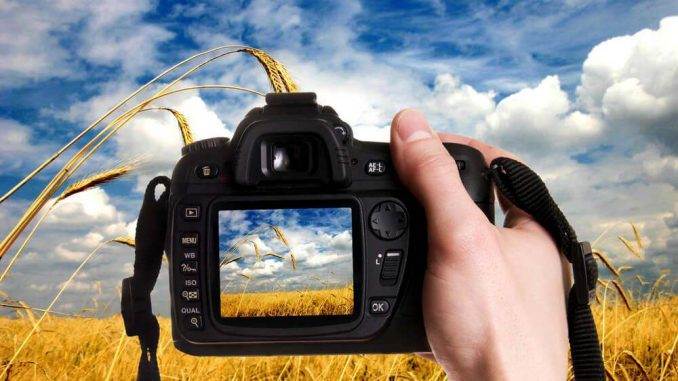The perfect picture is the aim of every photographer, but it’s a common misconception that it will just “come to you.” Spontaneous moments can be beautifully immortalized, and they are some of the most precious memories you will capture.
They often seem like an impulsive, raise your camera and click decision, but there are many more nuances to take into account. It’s what takes one from a decent photographer to a professional. Those moments are coming, but will you be ready ahead of time?
There are numerous types of photography, each that has its own set of rules. You may know by now that the process of shooting portraits is not quite the same as culinary photography, for example. However, they all have the same essence, which is capturing the perfect picture, a moment in life that will live on forever.
There is a reason why photography is considered part art and part technical. It’s a wonderful blend between having a knowledge of setups and the soul of an artist.
It’s a State of Mind
The first thing you always have to do is to prepare yourself ahead of time. Find the perfect camera, pick your subject, and work on getting into the right state of mind. It starts easy: define yourself as a photographer and find your niche. It sounds simple, but it truly isn’t. You need to discover what you want to shoot and focus all your attention on it.
Visualize your subject and understand your motivation for snapping the picture. If it’s just a photo and your interests are too generalized, the results will be mediocre at best.
Half the battle can be won in your mind. Your definition of yourself as a photographer and your ability to think about what you want and how you want it will decide if you’re on the right path.
Never Forget the Rule of Thirds
Every photographer has heard about the “rule of thirds” at least once in their life. It’s well-known by professionals and far too often broken by beginners, which is why it’s constantly repeated. The rule highlights the greatest misconception that the subject needs to be centered. I’ve seen and heard of two versions of this particular crucial element. One aspect that remains common is dividing your viewfinder into three rows and three columns.

One interpretation of the rule states that the subject of your picture should be in 1/3 of the frame, either vertically or horizontally. The second is to have the element you want to be highlighted at the intersection of two lines, whichever they are. No matter which you apply, the end effect is the same.
It changes the focal point and, thus, makes the picture more interesting. The image is more powerful and has more depth.
The Angle Tells the Story
The perfect picture needs the perfect angle. And just because it’s not right, does not mean it’s wrong. For portraits, the ideal technique is to look your subject in the eye and stoop or heighten yourself to their level.
The eyes are a pure reflection of the soul, and it’s something blatantly true photography as well. Whether you aim to catch an engaging smile or mesmerizing gaze, hold the camera to a person’s eye level in order to captive their essence. Your subject does not even need to look at the camera. The angle by itself will create a more intimate and inviting feeling.
However, consider your angle as the voice of your picture.
A bit of knowledge of human psychology will draw your viewer into a different perspective. For example, adults literally look down on young children, and kids themselves need to look up at adults. That’s a powerful tool that will help you get the perfect picture.
Think of the angles, as a higher one will make your subject look smaller and more vulnerable, while a low angle will make it look taller and more imposing. It can add another dimension to your image.
Never Lose Focus of What You Mean
Keep a strong hold of the message you want to express behind your picture. Our eyes naturally focus on multiple things at the same time, and we don’t even notice that some do not appear as sharp as the others. A camera works a bit differently.
You gain another level of control. Selective focus is potentially crucial to your picture and the meaning behind it. The depth-of-field can separate your subject from their environment or bring focus on what you want the viewer to see.
One slight change and it can take your picture from a mere photo to a true representation of a moment, and become the epitome of your message.
While both pictures are, in essence, the same, the shift in focus inspires different emotions. One focuses on the man with a gun in hand, while the other can evoke feelings of fear and intimidation through the focus on the weapon. The ability to bring out these emotions through simple tactics will take you to the perfect picture.
Learn how to capture the hidden gems within a picture. It has been said before, and it will be said again: an image can speak a thousand words. It’s your choice which words you use, though.
Take A Step Closer
While technology has advanced to absolutely spectacular lengths, we tend to forget that manually replicating their features can result in more meaning. To take the perfect picture, do not hesitate to zoom in by physically taking that step closer. If your subject is smaller than a car, take a few steps forward and fill the area with details that you might’ve otherwise missed.
As a general rule, staying three feet away is the minimal distance you should have from your subject.
By doing it yourself, you will be able to catch those subtle nuances that take a picture from a mediocre image to a revealing and breathtaking immortalization of a moment.
Getting the perfect picture is nothing short of a balance between your choices. They need to blend wonderfully and planned to captivate the soul of your subject or the beauty of a landscape.
It takes more than knowing the technical aspects and prime setups that can be learned in a manual. The right picture is in your style and how you find the right elements that will polish your image to perfection.
About The Author –
Richard was born in Reading to parents who were farmers in Henley-on-Thames. He went to Berkshire College of Art in Reading were he qualified in commercial photography. His college work experience was with ex BCAD Alumnus, Paul Howerd, who really opened his eyes to life as a professional a photographer.
Richard was hooked for good and went to work for him after college. Paul persuaded Richard to build his own portfolio, which became his calling card for his first job as a studio photographer at the tender age of 21. Richard was to set up for his own studio in a disused barn on his parent’s farm in 1988.
This studio quickly grew to a larger studio complex taking in more barns dedicated to room sets and drive-in infinity coves for car shoots. A brief dalliance with his own video production company in the early Nineties ended when his business partner emigrated. The photography really took off with many major clients on board such as BMW, Rolls Royce, Ricoh, Bosch, Panasonic, Sony, 3M and Xerox to name a few.
The digital revolution made shooting video lot easier and Richard and his team at Meadows Farm Studios now shoots as much video as it does photography. MFS now has added an aerial drone service where Richard is there creative eye behind the camera.
Richard has a very keen sense of lighting and composition. As well the ability to design camera dynamic movements. Richard is also not afraid to get up before dawn to shot at the coveted ‘Magic hour’ which can provide incredibly lighting conditions providing the weather is right.
Richard and his aerial partner Russell work closely as a 2 man team, Russell remotely piloting the UAV and Richard using an HD download to view the shot on his own screen and make the necessary adjustments via his transmitter.
For the aerial work Richard works with car clients as well as stately homes, and with the odd aerial music video.




Leave a Reply